Introducing The Scrambleverse — Four-color Lands?
Greetings Planeswalkers and Gatherers alike, my name is Christian Alexander, and welcome to the Scrambleverse! I played my first game of Magic right before Theros came out, attended a draft a couple weeks later, bought 2,000 cards with my friend Eric from some random guy on Craigslist, and never looked back. I quickly fell in love with Commander and have been playing ever since, having built around 20 decks and currently using 11, with three from Dominaria on the way!
The Scrambleverse series covers some of my favorite aspects of Commander: embracing the jank, creating the unexpected, mixing commanders together, throwing off your opponents, and, of course, scrambling the game. When you walk into a Commander game and see something like Kess, Dissident Mage hit the table, chances are you know what is about to be thrown at you. You are likely to play against Storm or spellslinger, right? But what if that wasn't the case? Much like judging a book by its cover, suddenly you are judging a deck by its commander alone. The only thing you know for sure is what your deck does and the capabilities of decks you've played against before. This article series briefly explores the common ways that a chosen commander is constructed, before diving into a way to build the commander that is unconventional. It will be a way to throw your opponents for a hilarious loop as they figure out what your deck does! Amongst this discussion, I will also talk about ways to efficiently use EDHREC as a deck-building tool! As my scuba instructor would say, let's dive right in!
Who Is the Commander?
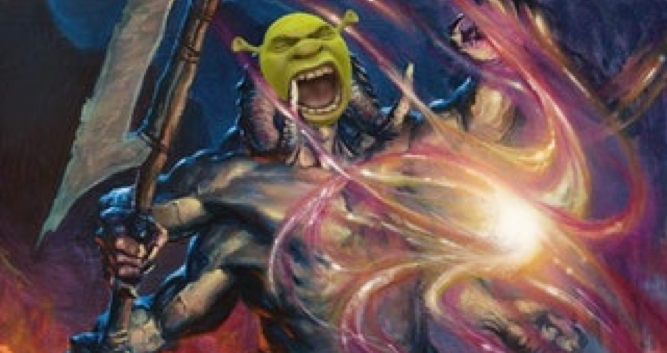
We're going to play Yidris, Maelstrom Wielder. The ogre himself, who will bring about a Shrekoning like none have seen before, will pilot our deck. When Yidris hits the field, there are a lot of things you could be expecting. The average decklist on EDHREC is all over the place in strategies and card types, due to the diversity of decks Yidris can play.
Yidris is often used to helm decks that thrive on cheating things into play with his Cascade ability, similar to a Maelstrom Wanderer deck. In addition, he is also found in decks that use wheels to constantly refill hands, fill graveyards, and cast powerful spells, which was the focus of his pre-constructed deck, and is the most common theme for him seen on EDHREC. One of his other main themes is chaos, abusing ridiculous enchantments like Hive Mind and Grip of Chaos. Those who thrive in competitive environments will more than likely use him to play storm, which is represented by the spellslinger theme on EDHREC. Lastly, he can also be seen helming numerous tribes, including wizards, dragons, and even eldrazi, due to him being a 4-color commander that is generically good with an ability that can support any play style. Now that we've seen what decks he can be seen in, let's look at our deck, which is actually its own small theme on EDHREC.
Deck-Building
When it comes down to thinking of an unconventional deck for a commander, the ideas can often be inspired by just a single card. For me, this was after discovering that mono-blue was a legitimate way to build landfall with Patron of the Moon. I had played against many Gruul landfall decks, and even some Golgari Dredge decks, but now my head was swimming with ideas for combining the different strengths of each of these commanders, with each offering something unique to the theme. I soon realized I would be making one 4-color landfall deck, piloted by Yidris.
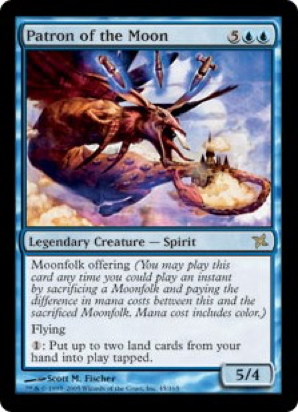
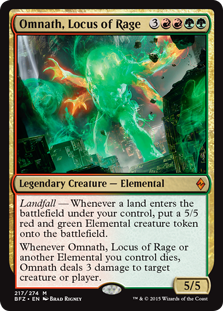
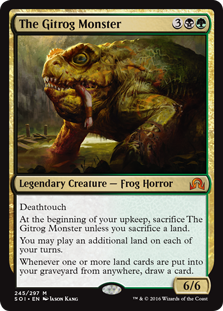
When building a deck that doesn't usually fit the commander, EDHREC can be an amazing tool to figure out what makes other decks work successfully, especially using the theme tool mentioned earlier. For this deck, I needed to look further into what made these different decks successful and see the most effective ways I could combine them. In addition, I really wanted to have some unique gimmick, so I decided to make this deck almost entirely permanents. This allowed me to use cards like Primal Surge and The Great Aurora to full effect, which we will discuss further at the end of the article. For the deck-building portion, we are going to look at some of the top cards in each of these commander's EDHREC pages under the Lands theme and see what we want to take and use, before taking some of our own, separate ideas to tie everything together. We'll begin with the most common landfall deck, the kool-aid man look-a-like himself, Omnath!
Om-Nom-Nom
Omnath, Locus of Rage is a great example of how the theme tool with EDHREC can be used, because he is both an incredible landfall commander and a token commander who supports very unique, specific synergies to abuse the tokens he creates. This time, we will just focus on lands rather than tokens. When we look at the main components of a Gruul landfall deck using the EDHREC theme tool, here are the main things that jump out at me:
- Extra land drops: It's very important to play extra lands as fast as possible, triggering landfall several times a turn.
Card Examples: Azusa, Lost but Seeking; Exploration; Burgeoning; Mina and Denn, Wildborn; Oracle of Mul Daya; and Wayward Swordtooth. - Playing Lands from different places: Being able to play lands from the top of your library lets you tunnel through, get extra lands, and thin your deck, while being able to play lands from your graveyard lets you reuse fetches and replay lands that you sacrifice or discard!
Card Examples: Burgeoning, Oracle of Mul Daya, Courser of Kruphix, Crucible of Worlds, and Ramunap Excavator. Splendid Reclamation and World Shaper allow for mass graveyard recursion, too! - X/X Creatures: These big, bad bombs are the creatures with power and toughness equal to the number of lands you control and are easy ways to quickly turn the tide in a game.
Card Examples: Molimo, Maro Sorcerer; Rubblehulk; Ulvenwald Hydra; and the new Multani, Yavimaya's Avatar.
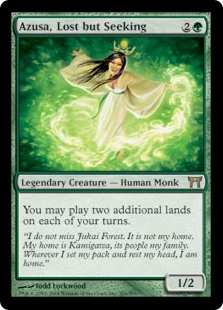
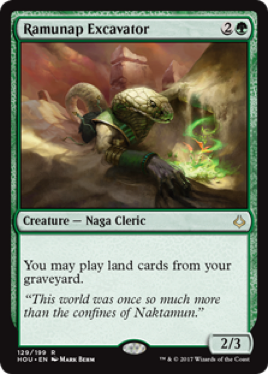
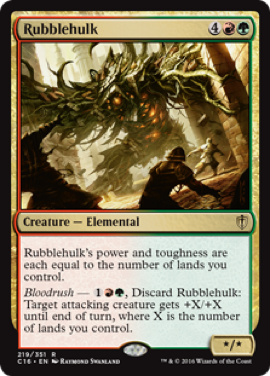
Now that we've figured out how we plan on playing extra lands, let's see how we'll capitalize on it! We can split the abilities we want into two categories: Those that generate creature tokens, and those that do other things.
- Creature Tokens: Obviously, we are already running Omnath, which creates tokens. However, there's actually a surprising amount of other deck-relevant token generators that either use landfall abilities, or work better with more lands in play. Because of this, we can begin to make a token subtheme with this deck.
Landfall Card Examples: Rampaging Baloths, Zendikar's Roil, and Sporemound.
Other Card Examples: Dragonmaster Outcast; Terastodon; Titania, Protector of Argoth; and Avenger of Zendikar (who has a related landfall ability as well).
- Other Abilities: These fall more into the category of usable landfall triggers that help accelerate gameplay through card draw, mana production, or to provide utility on the field. The main examples of the latter are the “Retreat” cycle from BFZ, which, while useful on a budget, I personally found to not be as effective as other options.
Acceleration Examples: Lotus Cobra, Horn of Greed, and Tireless Tracker. While it doesn't have landfall, another solid ramp option for us is Sword of the Animist. While this doesn't fit exactly in with ramp, Amulet of Vigor is another artifact that does help the deck accelerate by letting lands that would normally enter tapped enter untapped.
Utility Examples: Retreat to Valakut, Retreat to Kazandu, Retreat to Coralhelm, Retreat to Hagra.
By this point in the deckbuilding, we already have most of what we need for the landfall deck! Gruul is a disgusting landfall color combination, including Omnath himself, Mina and Denn, Wildborn and also Boborygmos Enraged. All three are going into the deck, and it is pretty clear that green is going to be our main color. Because of the similarities between the three decks, we're going to skip looking at Mina and Denn and Boborygmos and move on straight to our next green deck, the hypnotoad, GITROG!
Glory to the Hypnotoad!
After using the theme tool again for lands, I was fascinated with The Gitrog Monster lists, because Gitrog has such a vastly different playstyle than the Gruul decks. He cares about lands entering the graveyard and using Dredge as a combo piece rather than manipulating them on the battlefield. Titania, Protector of Argoth also falls into this category, since her ability is best utilized when the deck focuses on sacrificing lands. However, she does trigger when fetch lands enter the graveyard. I found that this was not a playstyle I wanted to use, as I was much more interested in fooling around with lands on the battlefield and in my hand rather than sacrificing them. However, despite this, The Gitrog Monster does provide us with another outlet to play multiple lands per turn, and it also gives us an added bonus whenever we use fetches. Considering this deck will be running Crucible of Worlds, Ramunap Excavator, and some mass graveyard return, losing a land every turn should not be a significant deficit, leaving solid spots in this deck for both The Gitrog Monster and Titania, Protector of Argoth.
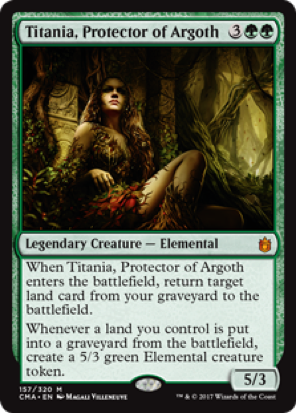
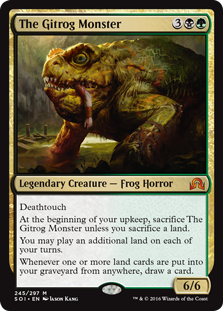
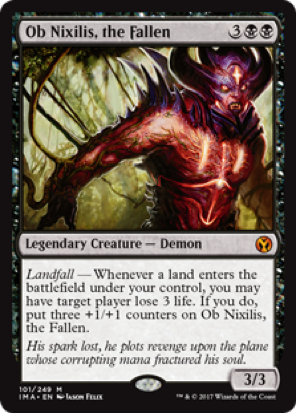
I found that black offers another landfall powerhouse as well, which is Ob Nixilis, the Fallen! I immediately imagined pulling off Splendid Reclamation and bringing 5-10 lands to the field, pinging players for three life per land and pumping him up to immense proportions. Later in the article, we will look at other non-Gitrog ways that black benefits this deck, but now I think it's time we examine our final Lands theme page, mono-blue Patron of the Moon.
That's No Moon…
I'm sorry, but I'm a Star Wars nerd so please expect a reference in every article I write. In the case of Patron of the Moon, it has 196 decks to begin with, only 6 of which are themed as lands. When looking at averages, the larger number of decks the average comes from the more reliable suggestions we get. Because of this and the fact that the deck theme of most Patron decks are going to be pretty similar to a mono-blue lands deck anyways, it's better to use the regular average deck suggestions rather than using theme filters.
First off, Patron of the Moon's ability is absurd. It allows you to get around the land drop limit. So, in the case that we do not have one of our seven extra land drop enablers, we can use this ability to get around it for extra land triggers! Now, imagine if you could replay those lands over and over again. That is what mono-blue moonfolk does best. The deck idea is to bounce lands to your hand and then use Patron of the Moon's ability to put them back into play, which avoids the land per turn limit while still getting more landfall triggers. This is the main factor we will be stealing from mono-blue landfall.
- Moonfolk Bouncers: These guys have pretty bizarre abilities tacked onto them, where bouncing a land is part of the COST of the ability. This is perfect, because it allows us to replay the lands to get more landfall triggers. There are really only three moonfolk we care about, and then an enchantment, which does pretty much the same thing.
Card examples: Meloku, the Clouded Mirror, Soratami Savant, Soratami Rainshaper, and Trade Routes. Even one of our Gruul Commanders, Mina and Denn, Wildborn, has this ability, making these elves honorary moonfolk!
- Landfall?: Yes, there is one landfall card worth his own mention, and that is Roil Elemental. Triple blue in a green heavy deck looks scary, but stealing your opponents' creatures EVERY TIME YOU DROP A LAND?! You're going to want to throw some protection on this guy immediately.
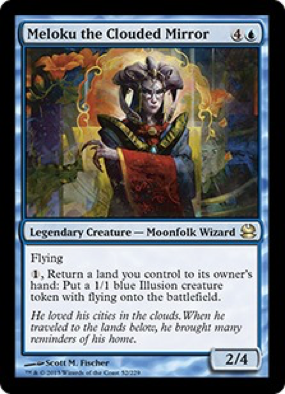
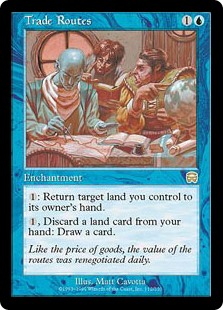
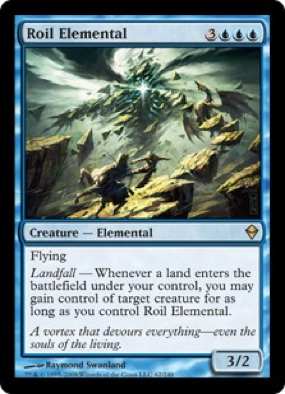
Making a Cohesive Deck
At this point, we've figured out what makes each deck work. Omnath functions by using as many landfall triggers as possible to generate tokens, Gitrog and Titania both run on sacrificing lands—which can help support our use of fetch lands, although it isn't the deck's theme—and then Patron of the Moon uses blue to bounce lands to our hand so that we can play them again. Now, let's fill out the remaining spells slots in the deck with card draw, ramp, removal, and complements to our main strategy.
- Card Draw and Advantage: Black and Blue offer some new options for card draw that Gruul doesn't. A simple concept that will pull us miles ahead in games, we have lots of ways to capitalize on this.
Card Examples: Phyrexian Arena; Damia, Sage of Stone; Muldrotha, the Gravetide; Thrasios, Triton Hero; Sylvan Library; Nissa, Steward of Elements; Tatyova, Benthic Druid; and Temur Ascendancy.
- Token Synergy: We have tokens coming from everywhere, so let's add some stuff to add a little backbone.
Card Examples: Craterhoof Behemoth, Beastmaster Ascension, and Xenagos, the Reveler.
- Removal: Every deck needs removal. Luckily, we can even turn other peoples' stuff into even more lands!
Card Examples: Song of the Dryads, Imprisoned in the Moon, Terastodon, and Borborygmos Enraged (technically…).
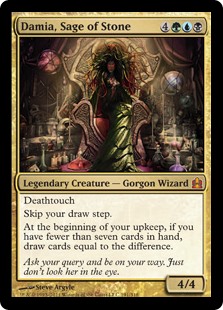
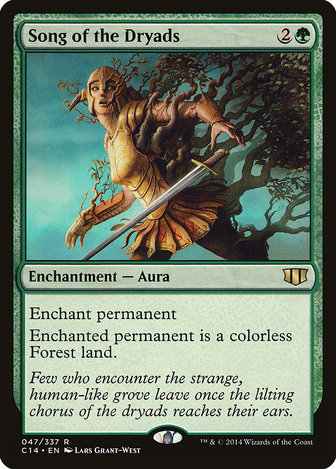
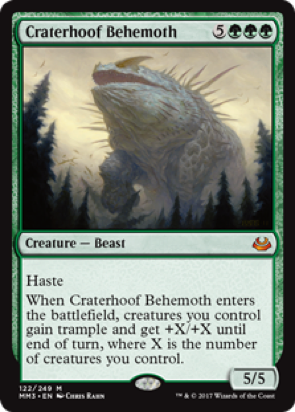
- Yidris abilities and good stuff: These cards are all just going to help us hit harder, cheat things into play, get extra mana, etc. Most of these effects are commonly found in other Yidris decks.
Card Examples: Xenagos, God of Revels, Maelstrom Wanderer, Bear Umbra, Sunbird's Invocation, and Sword of Feast and Famine.
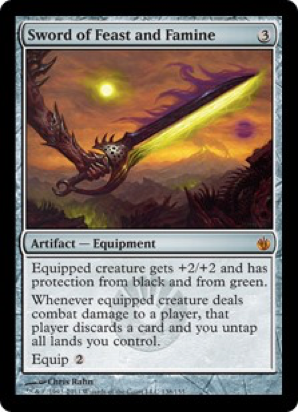

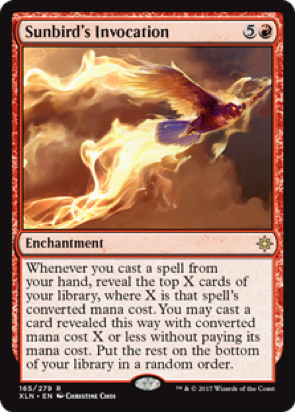
- Ramp: We need lots of dorks to throw out early game that can ramp us into our bigger spells and our commander. As mentioned before, we are not running any instant or sorcery ramp, so we need little guys that will fetch us lands. These examples are all very commonly found in landfall decks.
Card Examples: Sakura-Tribe Elder, Yavimaya Elder, Farhaven Elf, etc.
Final Touches
The final touches on this deck cover the only three non-permanent spells that I mentioned at the beginning of the article: Splendid Reclamation, The Great Aurora and Primal Surge, as well as our fixing and utility lands.
As you remember, our first non-permanent is Splendid Reclamation, which will help get all lands back from the graveyard at once, which is very useful with fetches. The Great Aurora, with both the amount of lands we have on the field and the number of tokens we generate, will often help us significantly more than other players. This can set us miles ahead of everyone else on the table, putting us in a spot to take the field into our own hands, and can even function as a makeshift boardwipe. Primal Surge just does what Primal Surge does best. It vomits our entire library (or close to it) onto the field. With two haste enablers, a bunch of landfall triggers, and an overwhelming board presence, this usually sets us up to win the game soon, if we're not ready to win that turn.
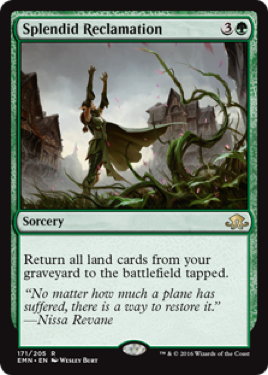
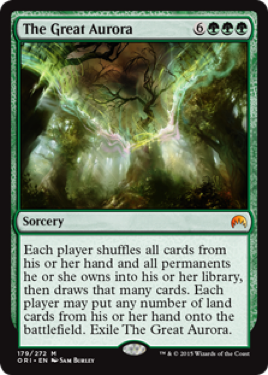
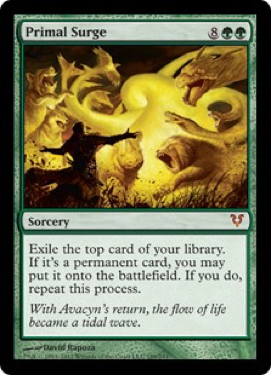
As far as lands go, this is a lands deck, so we will be using all of the fetch lands to get as many landfall triggers per turn as possible. Because of this, we will want nonbasic lands that have multiple basic land types, such as shock lands for fixing and to fetch with, so we will use all of the available shock lands and tango lands. Our last cycle of lands for fixing will be the check lands, since you will almost always be able to get them in untapped with how many lands we get to fetch and play. For utility lands, I have included Kessig Wolf Run and Rogue's Passage to help get damage through and ensure Yidris's ability activates. We will also be using Undiscovered Paradise, which is a secret gem to landfall decks.
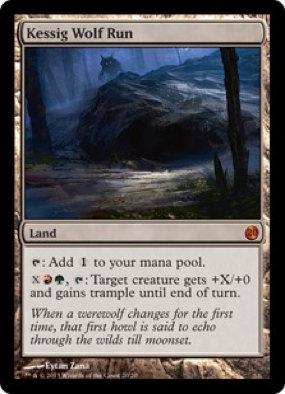
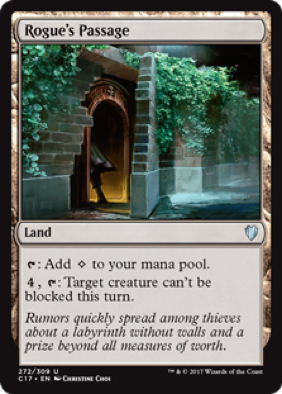
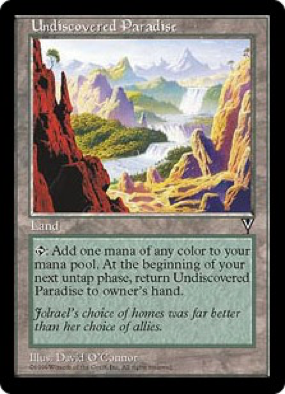
Everything I've said in this article only gets better when considering that every single time we cast a spell, there is the potential that we are cascade with Yidris's ability. Now that we've put all this together, let's take a look at the decklist!
How Do We Play This Deck?
“You play lands, duh.” Well, yes, that is true. Conceptually and mechanically, this deck is extremely straightforward, but this is not the question I am asking. This is the part of the article where we address, as Jason Alt has named it, “The Rafiq Problem.”
To paraphrase, The Rafiq Problem is when people are tired of losing to specific commanders and will target you regardless of how much you try to explain that your deck is not “that” kind of deck. One could therefore argue that you shouldn't even bother trying to hold back or build a goofy a deck with these commanders, since people will still react as if you're playing a 100% finely tuned deck.
In some cases, this sentiment of always going all in is absolutely true, but I do think that there are ways to get around this problem and still build fun, goofy decks. In addition, not all commanders that we talk about will have this problem, but Yidris certainly does. As we know, Yidris, whether it's built as a storm, cascade, or chaos commander, can be very intimidating at first glance. The landfall list can hold its own, but will not do so against super aggressive early attacks, due to the high curve and steep mana requirements. Here are some strategies to use with your playgroups to help get around The Rafiq Problem:
- Be upfront and straightforward: This will probably go over easier in playgroups in which you regularly are playing. Just tell your friends “Hey, I made this janky four color landfall deck, I have no idea how it will work, so let's try it out and see how it does.” Chances are, if your group is a cool group to play with, they'll give you some space to goof around with it as long as you don't go overboard, and will adjust accordingly based on how it performs.
- Show them what's inside: Some people doubt how you build a deck. The first time I brought this deck out in Connecticut, everyone was super wary because Yidris was on the field. When they Thoughtseized me and saw Zendikar's Roil and Sporemound in my hand, though, I was suddenly not a threat, because they had seen land-based token generators in my deck instead of storm combo pieces or giant terrifying creatures. I could have gone further and just showed them some of the cards to prove my point before the game, although that can ruin the surprise for some people.
- Compare it to other decks: I have a friend in this new playgroup who always plays the same Kess, Dissident Mage deck, and a separate friend who plays Borborygmos Enraged. When I play against people from the same shop who have played with these friends but whom I have never played against, I compare my decks to theirs. I will say that my Yidris deck was able to hold its own against Borborygmos but struggled against Kess. That gives a sense of where on the power level spectrum my deck is.
We will go into further ways to address The Rafiq Problem in future articles, but these are just a few to get you started in playing with new, potentially less powerful decks with potentially scary commanders. Once people you play with see this deck, it will probably become more well known and people will begin to learn how to appropriately combat it while retaining the spirit and fun of the game. For example, in my playgroup back in Indiana, this Yidris deck is at the powerful end of the spectrum, and is treated as a threat because of that, so it is usually played against with high-powered decks. However, it doesn't do well in my new playgroup in Connecticut with the super aggressive decks that can either combo off early or mow it down with early aggression before I am able to get my engine operational. People in this playgroup now know that this deck is not a significant threat within that power level, and so adjust by playing weaker decks against it.
Reviewing What We've Made
Obviously this deck has a lot of strengths. It can explode out of nowhere late game, it plays four colors efficiently due to the high level of fixing, and it can go from little board presence to the biggest threat in the game over the course of a single turn. However, it also comes with many weaknesses. It is top-heavy with a high average CMC, has very little removal, has no counterspells (aside from the one moonfolk), and has no boardwipes other than The Great Aurora. Now, sometimes people ask “why didn't you use X card or build Yidris in X way instead? That would make your deck way better!” Well, there are a lot of responses to that. In decks like this, there are always ways to make them better and more competitive. However, the whole point of this wasn't to build a deck that always wins 100% of the time. It wasn't to build a super competitive deck and do exactly what I want it to every time. The design of this deck was founded on the concept of pulling off something ridiculous, with a commander that usually does very different things. When you see a Yidris hit the table, you expect storm, cascading shenanigans, wheeling, or even chaos. But now, you also expect the potential of something weird, like a bonkers permanents only landfall deck.
Now, you expect the unexpected.
Your opinions are welcome. We love hearing what you think about Magic! We ask that you are always respectful when commenting. Please keep in mind how your comments could be interpreted by others. Personal attacks on our writers or other commenters will not be tolerated. Your comments may be removed if your language could be interpreted as aggressive or disrespectful. You may also be banned from writing further comments.
